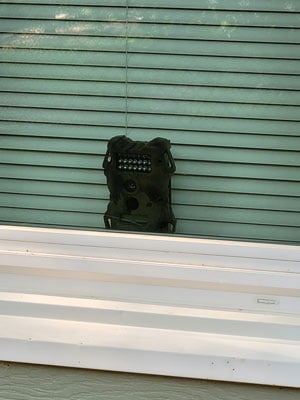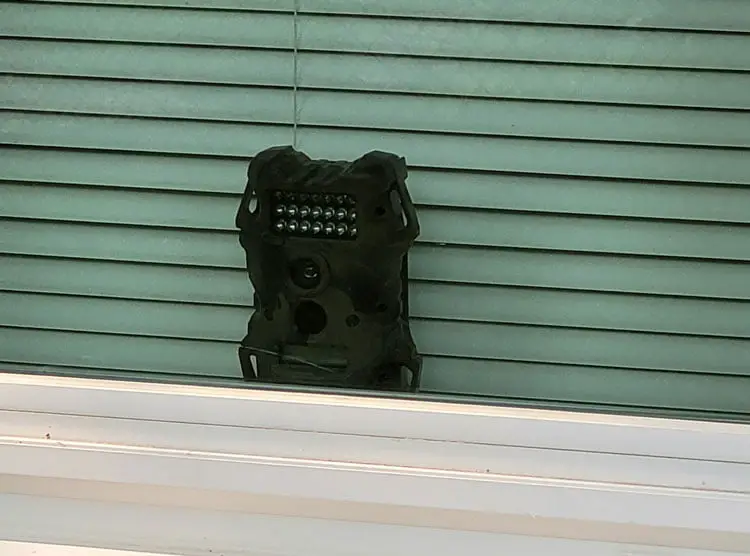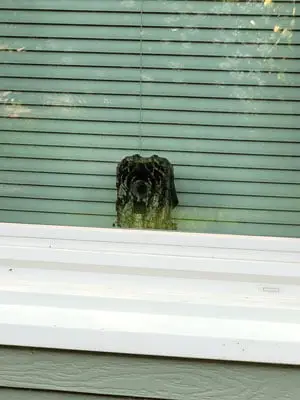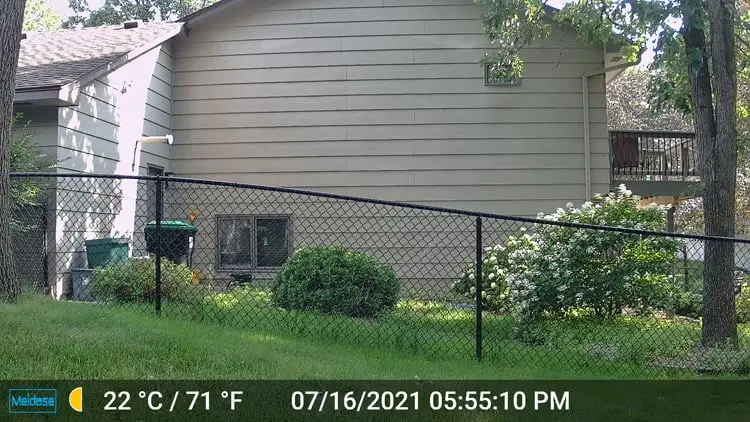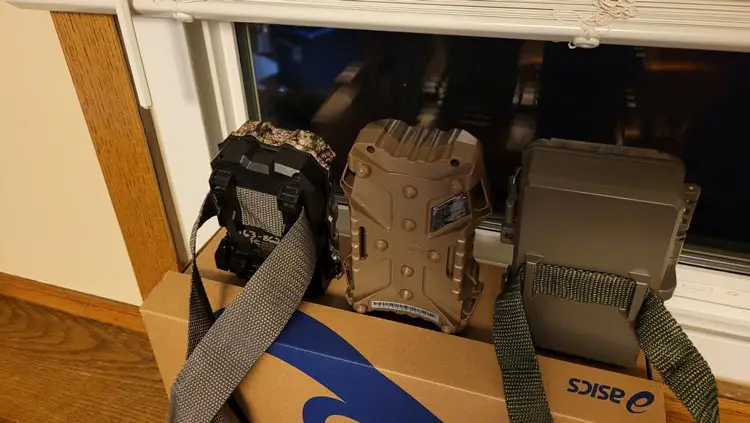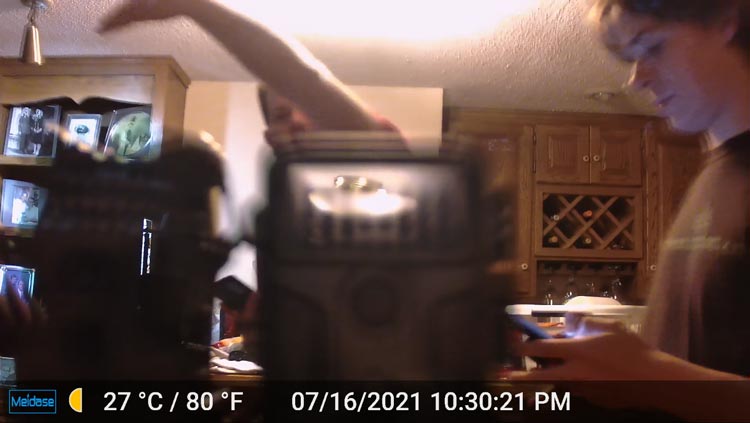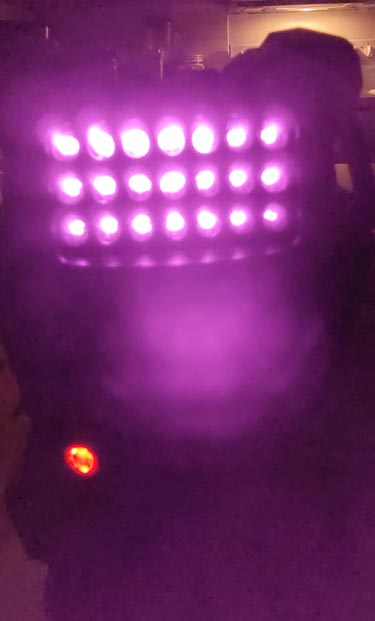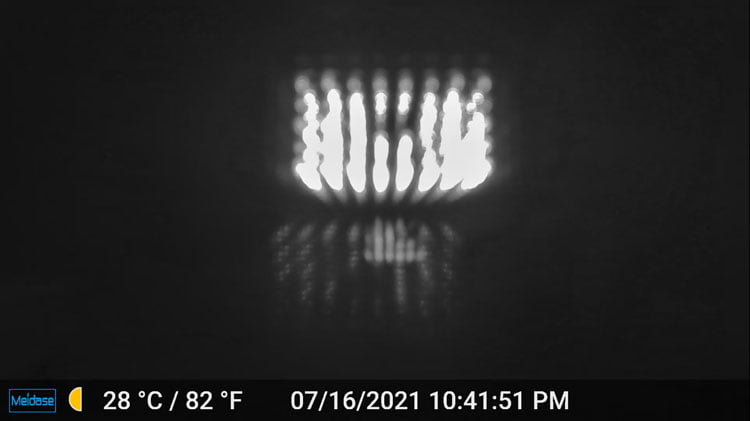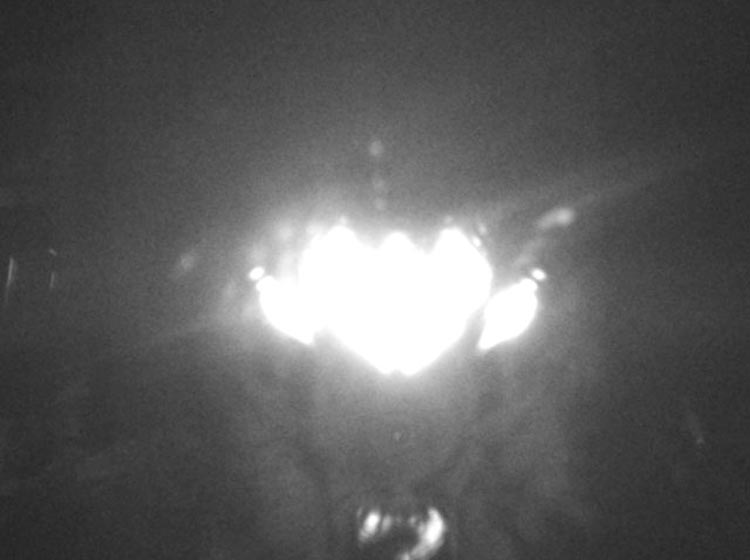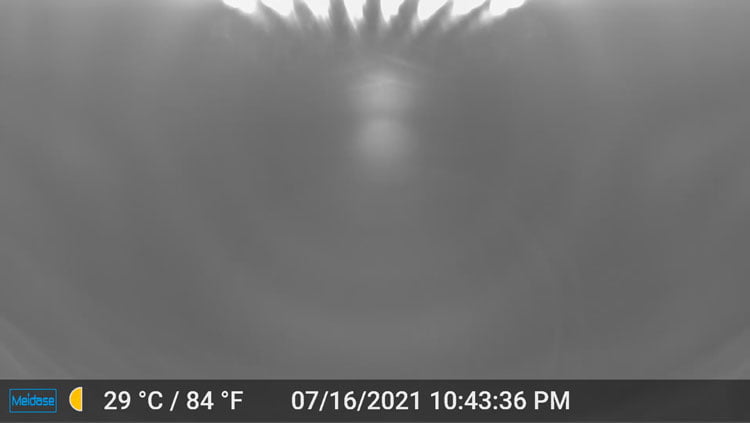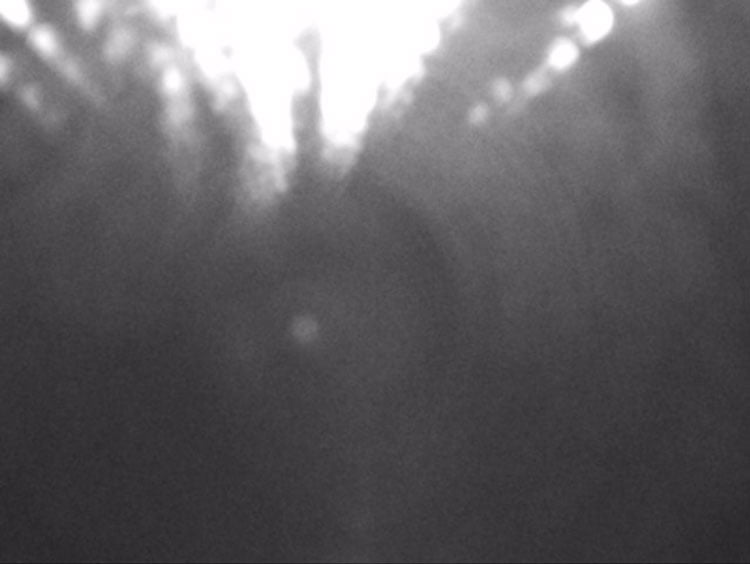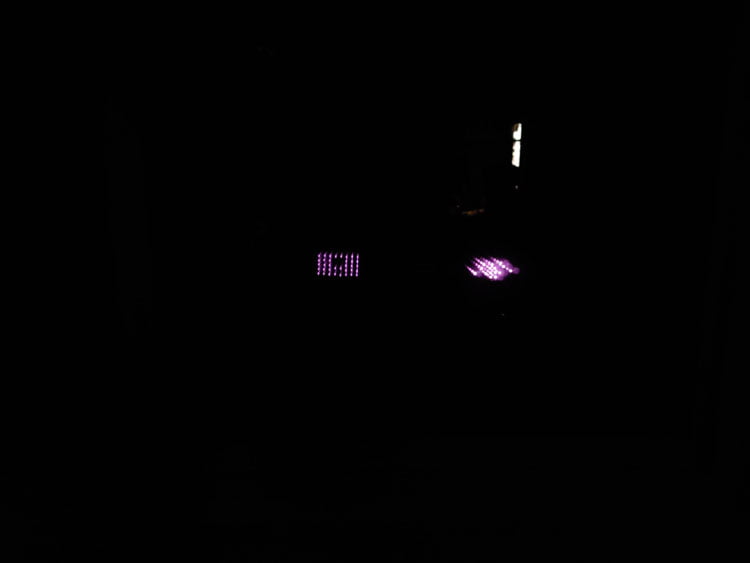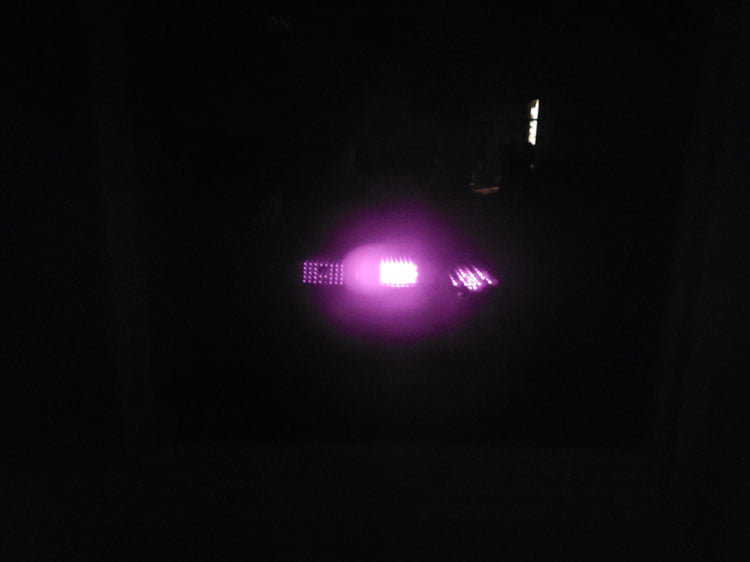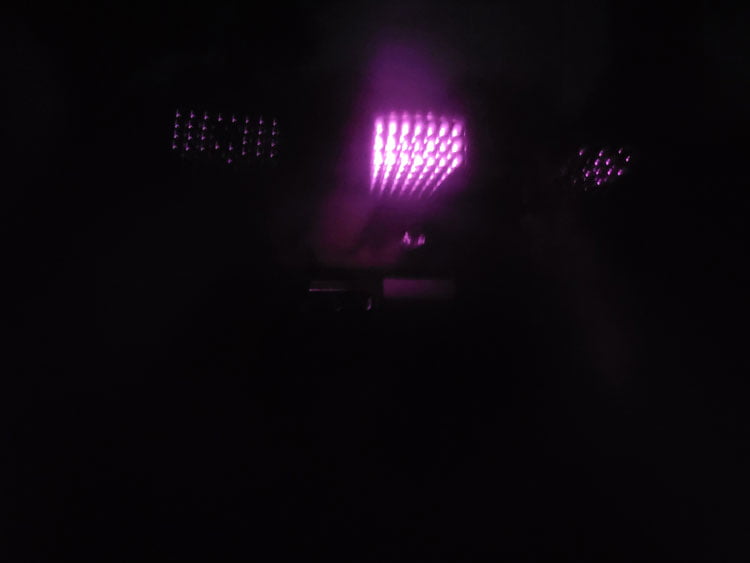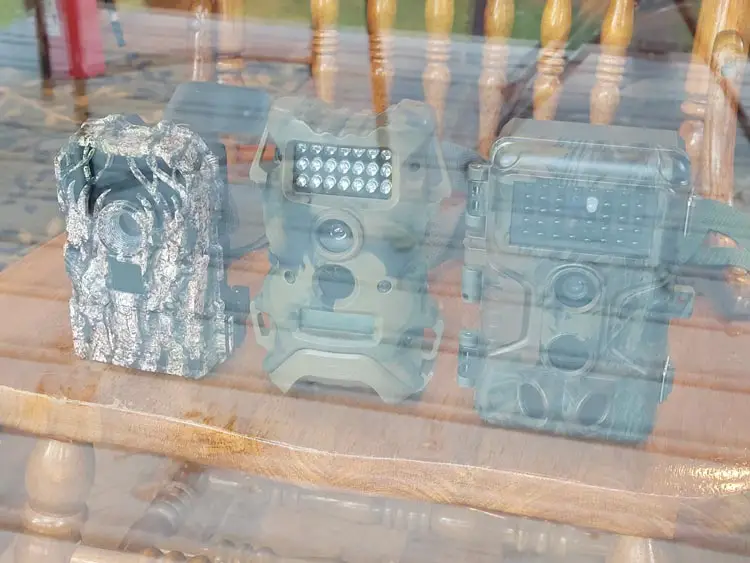Trail cameras have long been popular with hunters and outdoor enthusiasts who use them to monitor game animals and document natural scenes or events.
Over time people have come to realize that trail cameras can be useful tools to help monitor your home, business, or other property as well. With a variety of options available, trail cameras can often be more versatile than traditional trail cameras. Part of their versatility comes from their portability and the variety of places where they can be deployed.
Traditionally, trail cameras are mounted on fixed objects like trees or posts. These can also be good options for locations to put your cameras when using them for security purposes. However, depending on the location you would like to monitor, the type of camera, its features, and the settings you select, a tree or post may not be the best option. Heck, sometimes a tree or post isn’t anywhere near the area you would like to keep an eye on. Other times placing a trail camera on a tree or post might make it very obvious to trespassers or thieves and end up with your camera being stolen or vandalized.
This leads many people to consider placing the trail camera inside of their home or other building facing out from a window. If you are thinking about using a trail camera from behind a window there are some things we should cover first.
Table of Contents
Do Trail Cameras Work through Glass or Behind a Glass Window?
If you have ever tried taking pictures through a window you know that it is possible. but the quality of those photos can be less than it would be if the window wasn’t there. That said, trail cameras do more than your smartphone does when you snap a picture through the window.
Trail cameras have to sense when a subject enters the detection area in front of the camera to tell the camera to begin taking pictures or recording a video. Plus, they also need to be able to successfully illuminate the subject in low light conditions. Unfortunately using a trail camera from behind a window makes it harder for it to perform these tasks like it would if it were outdoors.
Potential Problems When Trail Cameras Are Used through Glass or behind a Glass Windows
It may not be obvious, but trail cameras face quite a few challenges when trying to work when placed behind a window. These challenges include:
Day Time Reflections
Glass is not completely transparent, meaning that not all of the light passes through it. Some of the light is reflected off, which can lessen the quality of a photo or video.
In addition, the camera will often pick up a reflection of itself or other objects or people from the inside of the window, which further impedes the camera from capturing high-quality images or videos of whatever it is trying to capture outside.
Nighttime Reflections
Most of us who use a trail camera or any other sort of trail camera for security purposes will want the camera to detect and record any activity that happens at night.
A trail camera is designed to automatically detect low light conditions and activate its flash whenever it is taking a picture or recording a video in low light conditions. These days virtually all trail cameras will come equipped with infrared flash, which unfortunately struggles with windows in a couple of ways. First, the infrared light has a hard time passing through the glass and illuminating objects on the other side. Second, even though people can’t detect the infrared flash the camera can, and when it reflects off the glass and back to the camera it will making the picture looked washed out, which makes it difficult for the camera to capture whatever is on the other side of the window.
Unfortunately, the flash isn’t the only thing that can create reflections that can be problematic at night. If there are lights on inside nearby the camera they can reflect off the window and negatively impact a trail camera’s ability to document whatever is going on outside.
Poor Motion Detection
When a trail camera detects activity in front of the camera it triggers a photo to be taken or a video to be recorded. However, the camera’s detection circuit, which is what actually detects objects to be captured, was designed to work in open spaces. Unfortunately, the detection circuit doesn’t do so well when glass is placed between the camera and the area it is monitoring.
How Do Trail Cameras Detect Motion?
The detection circuit of a trail camera doesn’t detect motion by using the image sensor to detect changes in the scene in front of the camera. In fact, the detection circuit of the camera doesn’t actually detect motion at all. Instead, it uses a passive infrared sensor (PIR) to detect changes in infrared radiation emitted by objects within its detection area. Infrared radiation is a harmless light that we cannot see. It is emitted by all objects at all times. People, large game animals, vehicles, and small animals such as squirrels and birds will typically emit a higher level of infrared radiation than the surrounding trees, rocks, and vegetation, due to their body heat or the heat created by a vehicle. So when an object that is emitting a different level of infrared radiation than its surroundings enters into or moves within the PIR’s detection area, the sensor detects it and sends a signal that activates the camera.
The PIR sensor is then combined with a Fresnel lens, which is the curved piece of plastic on the exterior of the camera that sits directly in front of the PIR sensor. The Fresnel lens condenses light onto the PIR sensor while breaking up the detection area into more (smaller) zones. This addition of the Fresnel lens allows the PIR sensor to be more precise and effective than it would be on its own.
Why Passive Infrared Sensors (PIR) Struggle to Work Through Glass?
A trail camera’s passive infrared (PIR) sensor struggles to detect motion through window glass because the glass doesn’t allow the infrared radiation to pass through to the camera.
The window glass works to prevent infrared radiation from passing through to the trail camera’s PIR sensor because the glass blocks or absorbs infrared radiation. Infrared radiation is blocked by the atoms in the glass because infrared radiation is a wavelength of light. The glass’ atoms vibrate at the same frequency as infrared radiation and thus work to absorb infrared radiation that tries to pass through the glass. The infrared radiation is not reflected by the glass but instead absorbed by the atoms in the glass.
Our Experiment to See If Trail Cameras Work Through Glass
Having never actually tried to use a trail camera through glass before, I didn’t want to just tell you a bunch of things that we already knew or some tidbits of information that we researched for this article. Instead, I enlisted the help of my son to do an experiment to see if we could get one of our trail cameras to work through glass.
We decided to test 3 of our trail cameras in video mode (1 camera was on Photo + Video mode) as we tried to examine 4 things:
- Could we get the PIR to work through the window glass?
- Could the IR flash illuminate objects at night?
- What sort of images/videos could the cameras get during daylight hours?
- What sort of images/videos could the cameras capture at night?
We will break our findings up into 2 sections, daytime results and nighttime results.
Daytime Results
We expected that the cameras could capture useful video during the day albeit of lesser quality due to reflections in the glass and if there was any dirt or debris on the windows (Hey, this is a real-world example.). Since it was daylight we didn’t have any lights on in the house, which we hoped would help to minimize any reflections on the inside of the glass.
Our daytime setup looked like this.
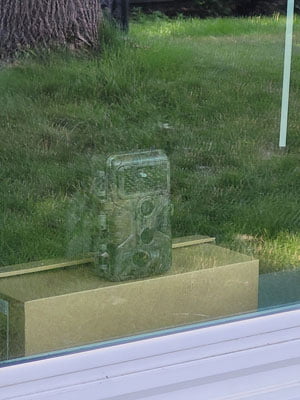
We couldn’t get any of the cameras to detect us walking by the window whether we were immediately in front of the window, by our neighbor’s fence (approximately 20 feet away from the house), or anywhere in between. Finally, we went inside and I passed my hand between the camera and the window to trigger the detection circuit. Here is a frame from the video.
Note: I compressed this image and the images further down in the article so they would load faster on your device so they are of a bit lesser quality than what the cameras actually captured.
On one hand, the trail cameras were all able to capture pictures and videos of a quality that would be useful for security purposes. However, their ability to capture usable images is moot since we couldn’t get the passive infrared sensors to work on any of the cameras. There isn’t much usefulness in using trail cameras for security purposes, or any other cameras for that matter, without the ability to detect and capture activity as it is happening.
Nighttime Results
Since the passive infrared sensors are designed to work equally well both day and night, we weren’t expecting to get any better results at night. In fact, not only did we expect the cameras to not be triggered, but we were worried about reflections a lot more from inside the house – if the lights weren’t off. Speaking of reflections we were also concerned about how much of a reflection the IR flash on the camera would make on the window.
Instead of placing cameras individually in front of the windows as we did during our daytime tests, we lined them up together in order to minimize how much time we needed to be outside with the mosquitoes.
Our setup at night looked like this.
Below is a frame from the video that one of the cameras captured after I passed my hand in front of the PIR sensor as we were getting set up at night. As you can clearly see if there are lights on inside anywhere by the trail camera it probably isn’t going to capture anything outside the window especially if there is any sort of space between the camera and the window. In this case, it was almost as if the trail camera was taking a picture in front of a mirror.
Once we began our test we turned the interior lights off and took turns going outside with the cameras trying to trigger them while the other person stood inside with the cameras. During part of our nighttime tests, the person on the inside would trigger the cameras manually while the person outside would try to detect if any of the IR light from the flash made it through the window using a cell phone camera.
Note: Did you know that most cell phones are capable of capturing the light coming from the IR flash on trail cameras or the remote control from your tv remote? Below is an example of what a cell phone can see in the house in low light conditions when the IR flash goes off on a trail camera.
Just as we expected we weren’t able to get the PIR sensors on the cameras to work any better at night. To be fair there was one time when the cameras were triggered at night when someone was walking by mere inches in front of the window, which is something that we weren’t able to do during the day. However, since we were never able to get the cameras to trigger a second time we think that we accidentally bumped the box the cameras were on and this is what caused them to be triggered (we were standing right next to the cameras in a pitch dark room after all). Regardless, of whether or not it was a “real” trigger or we bumped the box, you want a security camera to be able to detect activity that is more than 1 or 2 feet away from the house, which is something we were never able to do.
When we triggered the cameras from inside the house by passing our hand in front of them here is what they captured with someone standing just outside the window. Here are some examples of what they captured.

While the amount of reflection from the flash in the window varied a bit from camera to camera it really interfered with the cameras’ ability to see anything beyond the window.
Having not yet seen what the cameras captured, but expecting that the reflection from the flash would be a problem we tried triggering each camera individually (from the inside of the house) and placing them as flush as possible on the window glass to see if we could avoid the reflection from the flash. As you can see below putting the cameras flush up against the window helped to avoid the reflection caused by the flash, but we confirmed that the infrared LEDs weren’t able to illuminate things enough to capture the person standing just outside the window.
Our Surprise Finding at Night
Since the PIR sensors didn’t work through the window we weren’t surprised that the IR LED flash didn’t work at illuminating objects outside the window either. So it surprised us that when we triggered the cameras from inside the house were able to detect the IR flash outside with our cell phones. That said, as you can see in the pictures below that we captured with our smartphones the brightness of the IR flash we were able to see with our cell phones outside is much less than what it was when we weren’t separated by a window.
Here are some pics showing the IR flash when the cameras are sitting on the box.
Once we detected the IR flash with our smartphones we moved in closer to take some more pictures with our phone to document it further.
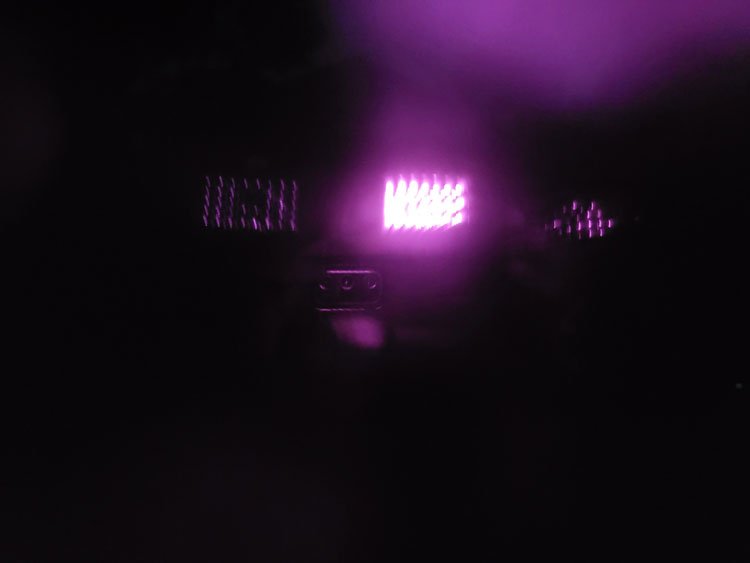
However, what we learned from this is that not all of the IR flash is blocked by the window, but there isn’t enough making it through for the camera to capture images effectively at night.
While we didn’t test for this and don’t have any proof one way or the other you have to wonder if some infrared radiation is making its way through the window to the PIR sensor, but it just isn’t enough for the PIR sensor to trigger the camera. Regardless of if any infrared light is making its way through to the sensor, it doesn’t change the fact that the PIR sensors aren’t effective through the glass.
Was it just the particular type of window we were using to test our camera that kept them from working?
While we didn’t think there was anything that special about the window we were using to test the cameras, we wanted to be sure. So we actually did another quick experiment through a glass patio door to see if we could get the PIR sensors to detect us. The patio door that we used was made by a different manufacturer and is less energy efficient than the window we used earlier.
Here is a picture of our setup in front of the patio door.
We ended up not being able to get any of the cameras to detect us despite walking in front of them being less than 5 feet away. The only time the cameras’ detection circuits were activated is when we opened and closed the patio door. So it is safe to say that the type of window doesn’t really impact a trail camera’s ability to work through a window.
Other Places to Setup Your Trail Camera
If the reason you are thinking about using a trail camera through a window is that you can’t seem to find a place that won’t easily give away their location to any potential intruders you just need to look up. Think about mounting trail cameras from elevated positions on trees, posts, the side of buildings, or under the eaves.
This can be a successful strategy for a few reasons. First, many intruders are too busy looking forward, behind themselves, and from one side to another, that they regularly neglect to look up. Second, even for the small number of people who do happen to look up and spot the camera, they won’t be able to reach it.
So Should You Try to Use a Trail Camera Through Glass?
In the end, we would not advise you to use a trail camera from behind a window to monitor what is going on outside at your home or other property. The whole reason people want to use a trail camera for security purposes is to gain photographic or video evidence of any vandals, thieves, or trespassers that come onto your property. When using a trail camera behind glass there are just too many things that could negatively impact the quality of pictures and videos the camera is trying to capture, if it is even able to capture anything at all.
If you don’t believe us then take the advice of a trail camera manufacturer. When asked by a customer if game cameras (trail cameras) can be successfully used through a glass door or window, Stealth Cam said, “Glass may disrupt your sensor beam. We don’t advise using the camera in this fashion.”
Tips for Using Security Cameras through Glass/Glass Windows
If after reading this you feel like you don’t have any good options and still want to try using a trail camera from behind a window here are a few things you can try.
Place the trail camera as close as possible to the window to minimize the chance of it picking up a reflection of itself. Depending on the shape of the camera and how you plan on positioning it in front of the window this immediately in front of the window could be more difficult in some situations. But if you can get the camera directly in front of the window with no gap between the glass and the camera you can minimize and potentially eliminate the chance of the camera picking up a reflection of itself in the images and videos it captures (at least when there is daylight).
If you can’t place the camera immediately in front of the window you may want to try facing it at an angle to the window instead of facing it directly at the window. If you have ever tried to take a picture of something that is in a glass case or someone who is in front of a window you already know that it is easy to capture a reflection of yourself with the camera if you are standing directly in front of the glass. This only gets worse if you happen to be using a flash. However, if you position the camera off to the side at an angle you can sometimes avoid seeing reflections.
Disable/Cover the flash. If the area you are monitoring has outdoor lighting you might be able to get some results without the flash, but there are a lot of variables to account for here… So no promises, but it could be worth a try – especially if you are trying it with a trail camera that you already own. That way you won’t be out any money if you try it out and don’t like the results.
Use the time-lapse feature. Most trail cameras today have a time-lapse feature that enables the camera to take pictures at time intervals that you select. When enabled this feature typically disables the motions sensor on most cameras. However, since we already know that the PIR sensor(s) will struggle to detect activity through windows anyway, disabling the PIR sensor(s) isn’t that big of a deal in this instance. The drawback of this is that you could end up with a lot of pictures that have nothing in them and could still end up not capturing the image of an intruder who briefly came within range of the camera.
Final Thoughts
Trail cameras struggle to work correctly behind glass. The PIR sensor can’t detect motion through glass and the IR flash struggles to illuminate objects on the other side of a window as well. If you want to use trail cameras for security purposes be sure to post them outside and preferably from an elevated position where they will be less likely to be noticed or tampered with.
In the end, if there isn’t a good way to place a trail camera to monitor the front of your home or other property don’t forget that there are other options out there. One of the most simple and popular options would be video doorbells. One of the most popular and highly rated brands is Ring, which offers both wired and wireless (battery-powered) options making installation quick and easy.
- Answer your door no matter where you are from your smartphone with 1080p HD day and infrared night video and two-way audio.
- Experience long-lasting battery life, custom alerts, privacy settings, and more.
- Get alerts when motion is detected or someone presses Video Doorbell. Connect to existing doorbell wiring or pair with a Sync Module (sold separately) to engage live view and two-way audio on demand.
- Choose to save and share clips in the cloud with a free 30-day trial of the Blink Subscription Plan or locally with the Sync Module 2 and USB drive (each sold separately).
- Designed for every home, go wire-free or connect to doorbell wiring to also sound your existing in-home chime. Without wiring, you can use your Blink Mini camera (sold separately) as an indoor plug-in chime.
- 1080p HD video doorbell with enhanced features that let you see, hear, and speak to anyone from your phone, tablet, or PC.
- An update from the original Ring Video Doorbell, enjoy improved motion detection, privacy zones and audio privacy, and crisper night vision.
- Receive mobile notifications when anyone presses your doorbell or triggers your built-in motion sensors.
- Powered by the built-in rechargeable battery or connects to existing doorbell wires for constant power.
- Easily setup by connecting your Ring Video Doorbell to wifi through the Ring app and mounting with the included tools.
- See more of who’s there – Battery Doorbell Plus with Head-to-Toe HD+ Video gives you an expanded field of view so you can see more of who’s at your door.
- Stay in the know even at night – Enjoy motion detection, privacy zones and see who stops by at night with Color Night Vision.
- Get important alerts – Know when a package is delivered with Package Alerts, an exclusive Ring Protect subscription feature (sold separately) that notifies you when your package is detected within a specified zone.
- Convenient power – Powered by a Quick Release Battery Pack for quick and easy recharging.
- Easy install – Easily setup by connecting your Battery Doorbell Plus to wifi through the Ring app and mounting with the included tools.
- 【Advanced AI Human Detection & Alerts】Harness the sophistication of AI that precisely identifies human actions, efficiently filtering out unrelated movements such as moving vehicles or fluttering foliage.
- 【Two-Way Audio & Multi-User Sharing】 Easily interact with visitors from any location in real-time. Interact effortlessly with visitors, no matter the time or place. Easily share access to your security camera with family members via email or QR code, keeping everyone informed and protected.
- 【Infrared Night Vision & 1080p HD】Experience crystal-clear 1080p Full HD imagery and infrared night vision with this outdoor security camera, allowing you to monitor your home day and night from any location.
- 【Encrypted Cloud Storage & Weather Resistant】Safeguard your footage with AES-128 encrypted cloud storage. Choose a subscription plan (sold separately) for enhanced security features, including video saving, reviewing missed events, and sharing videos. With IP65 rating for dust and water resistance, this cam promises unwavering vigilance throughout the seasons.
- 【Included Chime for Enhanced Convenience】Position the accompanying doorbell chime in various areas - dining room, kitchen, or terrace - for instant alerts. Add multiple chimes to a single doorbell for added utility.
- Protected Cloud Storage: Take advantage of AES-128 encrypted cloud storage through an optional subscription (available separately). Experience a 30-day free trial for uninterrupted recording and easy reviewing.
- AI-Enhanced Human Recognition: Superior AI capabilities discern humans from other moving objects like vehicles or foliage.
- Live Two-Way Interactions: Conveniently converse with visitors in real-time, from anywhere.
- Enhanced Night Vision: Four IR LEDs paired with a smart infrared sensor produce sharp videos, ensuring visibility in dim settings.
- Optimized 2.4GHz Wi-Fi Integration: Tailored specifically for 2.4GHz Wi-Fi for rapid and reliable connections (Note: 5GHz Wi-Fi unsupported).
- A Certified Refurbished Blink Video Doorbell is refurbished, tested, and certified to look and work like new and comes with the same limited warranty as a new device. Certified Refurbished Amazon devices may be packaged in generic Amazon-branded boxes.
- Answer your door no matter where you are from your smartphone with 1080p HD day and infrared night video and two-way audio.
- Experience long-lasting battery life, custom alerts, privacy settings, and more.
- Get alerts when motion is detected or someone presses Video Doorbell. Connect to existing doorbell wiring or pair with a Sync Module (sold separately) to engage live view and two-way audio on demand.
- Choose to save and share clips in the cloud with a free 30-day trial of the Blink Subscription Plan or locally with the Sync Module 2 and USB drive (each sold separately).
- 【1080P Full HD & Wide Angle】Take an eye on your home day and night with 1080P high-resolution video and the doorbell camera lets you see, hear and speak to people from your phone. Doorbell camera offers a 166 ° view angle so that the blind spots can be reduced as much as possible.
- 【Two-Way Audio】The doorbell camera has a built-in microphone and speaker system, which provides two-way high-fidelity conversation all the time. You can have a real-time video talk through the APP with whoever in front of the outdoor camera on any occasion and situation.
- 【HD Clear IR Night Vision】1080P resolution combined with the 166° super wide-angle lens enables the wireless doorbell to clearly record the movement of the front door without missing every key picture. which also has the same excellent performance in night vision mode.
- 【2.4GHz Wi-Fi Compatible】The 2.4GHz Wi-Fi range of Video Doorbell is up to 20m (66ft), it easily connects to your home’s Wi-Fi network, sending live video feed to your phone. You can see and talk to the visitor from the comforts of your bed, from work, or while on vacation.
- 【Intelligent and Portable】The doorbell can be controlled by APP, automatical work model, intelligent and portable.Portable in size and weight, convenient to install and remove.
- 1080p HD wired video doorbell with two-way talk, advanced motion detection, standard 2.4 GHz connectivity and customizable privacy settings.
- Get real-time notifications sent straight to your phone. To hear audio notifications in your home, pair with a Ring Chime, compatible Alexa device, or select the Video Doorbell Wired + Chime bundle. Note: the doorbell will not sound your existing chime.
- Advanced motion detection helps you know when someone’s at your front door before they ring your doorbell.
- Night vision with sharp contrast ensures you’ll never miss a detail – even in the dark.
- Hardwire Video Doorbell Wired using your existing doorbell wiring and the included tool kit for around-the-clock power and peace of mind.
- 2K Video Resolution with Head-To-Toe Viewing—Capture all porch arrivals and departures in greater detail.
- 24/7 Local Recording with MicroSD Card—See what happened start to finish with continuous local recording. MicroSD card sold separately.
- Existing Doorbell Chime Support—No more bypassing your home's existing chime when you upgrade to a smart doorbell.
- Two-Way Audio—Respond to visitors by simply pressing the "talk" button in the Wyze app.
- Free 12-Second Video Recordings—Get up to 14 days of cloud storage for clips captured on every doorbell press, and whenever the microSD card is ejected.
- Advanced Human Recognition Technology: Leverage AI capabilities to distinguish between human presence and other moving objects like cars and pets.
- Included Indoor Chime: Install the accompanying chime unit within your home, such as in the kitchen, dining area, or terrace. Multiple chimes can be synced with a single doorbell for added convenience.
- Optional AES-128 Cloud Storage: Choose an optional subscription for AES 128-bit encrypted cloud storage (sold separately) and enjoy video recording, playback, and sharing.
- Real-Time Notifications: Stay informed with instant alerts to your mobile device when the doorbell is rung or motion is sensed, keeping you in the loop with front door activities.
- 2.4GHz Wi-Fi Compatibility: The doorbell is tailored for 2.4GHz Wi-Fi networks to ensure a steady and quick connection (5GHz Wi-Fi not supported).
Last update on 2024-04-26 at 16:05 / Affiliate links / Images from Amazon Product Advertising API

